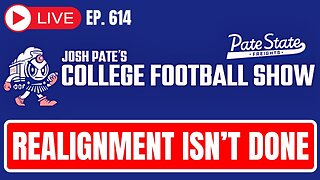Premium Only Content

Mastering ISF Violation Correction: Swift Solutions for Customs Brokers!
ISF Depot // 661-246-8217 // customs@isfdepot.com // www.isfdepot.com
In today's customs brokerage video, we focused on the topic of Importer Security Filing (ISF) violation correction methods. ISF violations can occur due to various reasons such as incorrect or incomplete information, missed filing deadlines, or procedural errors. It is crucial for customs brokers to be aware of the different methods available to correct these violations and ensure compliant trade transactions.
One method to correct an ISF violation is to file an ISF amendment. This allows for the updating or correction of information previously submitted in the ISF filing. It is important to file the amendment before the vessel carrying the goods arrives at the destination port to avoid penalties or delays in clearance. ISF amendments can be filed electronically through the Automated Broker Interface (ABI) or by submitting a paper form to the appropriate customs office.
In cases where the violation is related to the timing of the filing, a No Bond ISF option can be requested from CBP. This allows for a late ISF filing without the need to post a bond, but it is only available for the first violation. Subsequent violations may still require a bond. This method provides an opportunity to rectify a missed filing deadline without significant expenses.
For ISF violations related to incorrect or incomplete reporting of required data elements, filing an ISF correction, or amendment, is the best course of action. This allows for the updating or provision of missing or incorrect information, ensuring that customs authorities have accurate and complete information about the goods being imported.
In cases where the ISF violation is due to procedural errors during the filing process, a post-summary correction (PSC) can be filed. This allows for the correction of errors related to cargo descriptions, quantities, classifications, and other relevant details after the goods have been released from the port. However, it is important to file the PSC within 270 days from the date of entry.
By promptly addressing and rectifying ISF violations through these correction methods, customs brokers can help their clients avoid penalties and delays in the clearance process. Understanding these methods is crucial for ensuring compliance with CBP regulations and facilitating smooth trade flows.
Thank you for tuning in to this episode on ISF violation correction methods. We hope you found this information valuable and invite you to subscribe to our channel for more content on customs brokerage and international trade.
#usimportbond #isfcustomsbroker #uscustomsclearing #isfentry
Video Disclaimer Here: This tutorial is independent and not affiliated with any US governmental entities.
-
 1:00:54
1:00:54
The Tom Renz Show
12 hours agoMore Epstein/FBI, a Scary Trade War, & the Dem Echo Chamber
47.2K11 -
 40:43
40:43
Kimberly Guilfoyle
13 hours agoDems Double Down on Delusion-Why? Live with Tony Kinnett & Bo French | Ep.202
125K44 -
 1:28:42
1:28:42
Redacted News
11 hours agoBREAKING! SOMETHING BIG IS HAPPENING IN EUROPE ALL OUT WAR IS COMING AGAINST RUSSIA, TRUMP FURIOUS
174K340 -
 47:50
47:50
Candace Show Podcast
12 hours agoBREAKING: Judge Makes Statement Regarding Taylor Swift's Text Messages. | Candace Ep 155
158K137 -
 1:14:23
1:14:23
Josh Pate's College Football Show
9 hours ago $2.68 earnedCFB’s Most Hated Teams | FSU & Clemson Future | Big Ten Win Totals | Star Rankings Overrated?
39.6K -
 1:33:47
1:33:47
CatfishedOnline
10 hours agoGoing Live With Robert - Weekly Recap
47.9K1 -
 55:18
55:18
LFA TV
1 day agoEurope’s Sudden Turn Against America | TRUMPET DAILY 3.6.25 7PM
48.9K3 -
 4:21
4:21
Tundra Tactical
10 hours ago $4.07 earnedPam Bondi MUST Enforce Due Process NOW!
36.1K3 -
 56:42
56:42
VSiNLive
11 hours agoFollow the Money with Mitch Moss & Pauly Howard | Hour 1
57.2K1 -
 1:05:32
1:05:32
In The Litter Box w/ Jewels & Catturd
1 day agoShalom Hamas | In the Litter Box w/ Jewels & Catturd – Ep. 756 – 3/6/2025
112K40